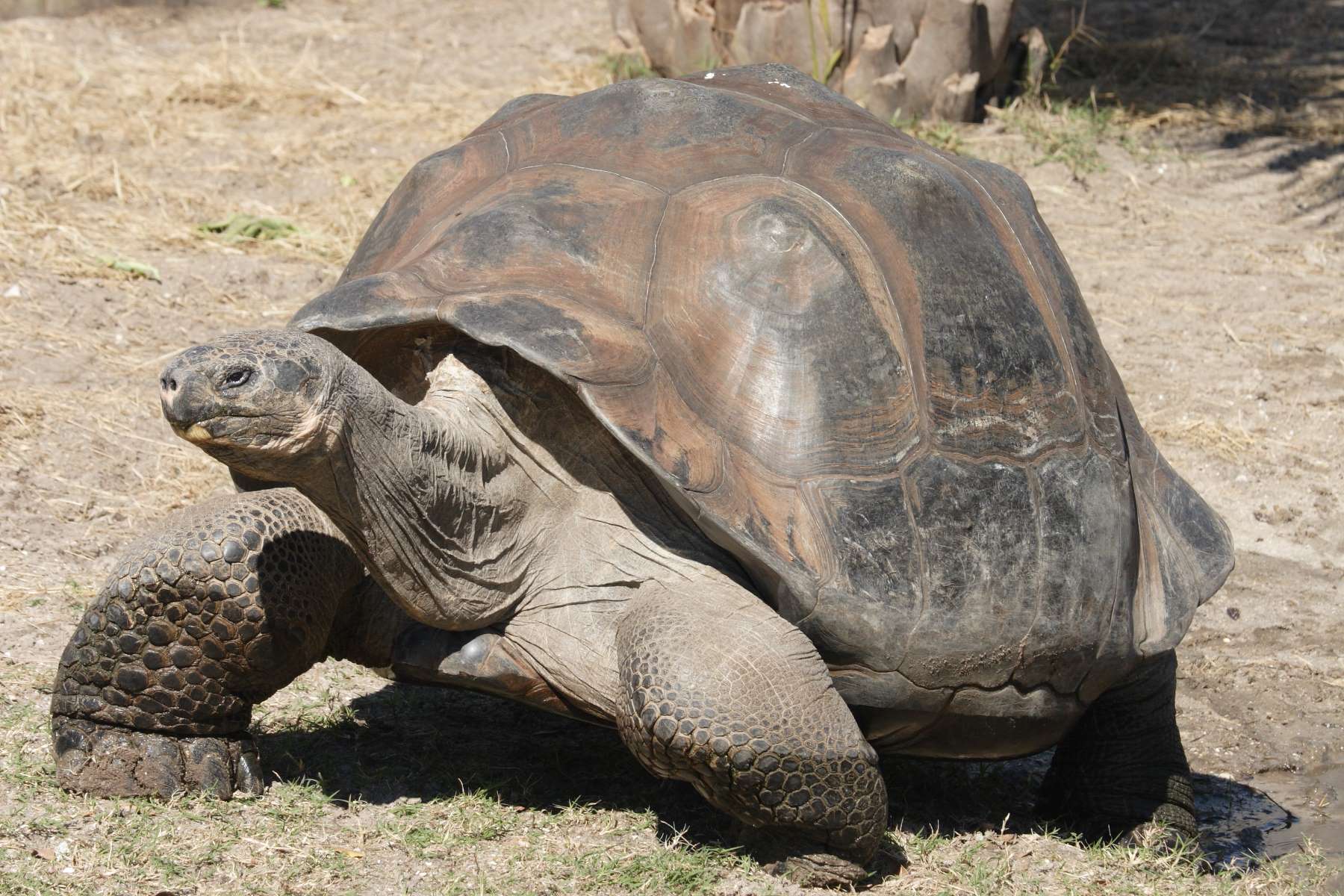
Ever wondered about the giants that roam the remote corners of our planet? Yes, I'm talking about the majestic Galapagos tortoises, creatures that seem to have sauntered out of a prehistoric era right into our times. These gentle giants hold a trove of secrets and surprises that could make your jaw drop. Did you know that Galapagos tortoises can live for over a century, making them one of the longest-living vertebrates on Earth? That's just the tip of the iceberg! From their unique adaptation strategies to their significant role in the ecosystem, these tortoises are a marvel of nature. So, buckle up as we embark on a fascinating journey to uncover 24 amazing facts about Galapagos tortoises. Trust me, you're in for a wild ride!
Key Takeaways:
- Galapagos tortoises can live over 100 years, have unique shell adaptations, and play a crucial role in their ecosystem by dispersing seeds. They are vital to the Galapagos Islands' ecological balance.
- Conservation efforts, including habitat restoration and breeding programs, are helping to preserve Galapagos tortoises, whose longevity and quirky traits make them fascinating and important creatures in their habitat.
What Makes Galapagos Tortoises Unique?
Galapagos tortoises are among the most fascinating creatures on Earth, not just for their size but for their incredible longevity and unique adaptations to the Galapagos Islands. Galapagos tortoises can live over 100 years, making them some of the longest-lived vertebrates known. Their slow metabolism and large, bony shells, which provide protection from predators, contribute significantly to their long lifespan.
-
These tortoises have evolved to have different shell shapes depending on their habitat. Those living in areas with lush vegetation have dome-shaped shells, while those in dryer areas have saddleback shells to reach higher vegetation.
-
Galapagos tortoises are capable of surviving without food or water for up to a year, thanks to their ability to store fat and water in their bodies. This adaptation is particularly useful during the dry season.
The Diet of Galapagos Tortoises
Galapagos tortoises are herbivores, primarily feeding on grasses, leaves, and cacti. Their diet is low in calories, which is suitable for their slow-moving lifestyle.
-
They play a crucial role in their ecosystem by acting as seed dispersers. As they consume vegetation, they spread seeds across their habitat, contributing to the health and diversity of their environment.
-
Interestingly, these tortoises can eat up to 80 pounds of vegetation in a day when food is abundant. This high intake is necessary to sustain their massive size.
Reproduction and Lifespan
The reproduction process of Galapagos tortoises is a slow one, contributing to their vulnerability and endangered status.
-
Female tortoises lay between 2 to 16 eggs at a time, which they bury in the ground. These eggs then incubate for four to eight months before hatching.
-
Despite their long lifespan, Galapagos tortoises reach sexual maturity relatively late, between the ages of 20 and 25 years. This slow start to reproduction makes population recovery a lengthy process.
Conservation Efforts
Due to human activities and introduced species, Galapagos tortoises have faced significant threats, leading to a drastic decline in their population.
-
Conservation efforts for these tortoises include habitat restoration, eradication of invasive species, and breeding programs in captivity to increase their numbers.
-
One of the most successful conservation stories is that of Lonesome George, the last known individual of the Pinta Island tortoise. Though he died in 2012, efforts to preserve his species have led to increased awareness and support for conserving Galapagos tortoises.
The Role of Galapagos Tortoises in the Ecosystem
Galapagos tortoises are not just remarkable creatures; they are vital to maintaining the ecological balance of their habitat.
-
By grazing on vegetation, they help to keep the plant population in check, preventing any one species from dominating the landscape.
-
Their movement across the islands helps to create paths that other animals use, and their digging for nesting sites helps to aerate the soil, promoting plant growth.
Fun Facts About Galapagos Tortoises
Beyond their ecological importance, Galapagos tortoises have some quirky traits that endear them to people worldwide.
-
These tortoises can sleep for up to 16 hours a day, conserving energy for their daytime activities.
-
They have a unique way of cooling down: they urinate on their legs. The evaporation of the urine helps to lower their body temperature.
-
Galapagos tortoises are known to be very friendly and curious towards humans, often approaching visitors without fear.
-
The oldest recorded Galapagos tortoise lived to be over 170 years old, showcasing the incredible longevity of these creatures.
-
Despite their hefty size, Galapagos tortoises can move faster than you might expect, especially when it's feeding time or they sense danger.
-
Each tortoise's shell has a unique pattern, much like human fingerprints, which researchers use to identify individuals.
-
In the wild, these tortoises have no natural predators once they reach adulthood, thanks to their size and protective shells.
-
The Galapagos Islands were named after these tortoises. "Galapago" means "tortoise" in Spanish, highlighting the significance of these animals to the archipelago.
-
Charles Darwin was fascinated by Galapagos tortoises during his visit in 1835. His observations of their variations played a key role in the development of his theory of natural selection.
-
Today, there are efforts to use GPS tracking to monitor tortoises' movements and better understand their needs and behaviors.
-
Galapagos tortoises have a special relationship with some birds, such as finches, which eat parasites from their skin, benefiting both species.
-
Climate change poses a new threat to these tortoises, as rising temperatures can affect the sex ratio of hatchlings, skewing it towards females.
-
Efforts to clone Galapagos tortoises, including those extinct in the wild, are underway, offering hope for their future conservation.
-
Finally, Galapagos tortoises communicate with each other through a series of grunts and hisses, an aspect of their behavior that researchers are still studying.
A Final Glimpse at Galapagos Giants
Galapagos tortoises, with their impressive lifespan, fascinating behaviors, and critical role in their ecosystem, stand as giants not just in size but in the natural world's narrative. These creatures teach us about evolution, adaptation, and the importance of conservation efforts to protect such unique species and their habitats. Their story is a powerful reminder of our planet's biodiversity and the interconnectedness of life. As we've journeyed through the remarkable facts about these ancient reptiles, it's clear they're more than just animals; they're symbols of resilience and the wonders of nature. Let's carry forward the lessons they offer, ensuring future generations can also marvel at these magnificent beings. Remember, every effort to conserve and protect counts, making a difference in the vast web of life.
Frequently Asked Questions
Was this page helpful?
Our commitment to delivering trustworthy and engaging content is at the heart of what we do. Each fact on our site is contributed by real users like you, bringing a wealth of diverse insights and information. To ensure the highest standards of accuracy and reliability, our dedicated editors meticulously review each submission. This process guarantees that the facts we share are not only fascinating but also credible. Trust in our commitment to quality and authenticity as you explore and learn with us.


